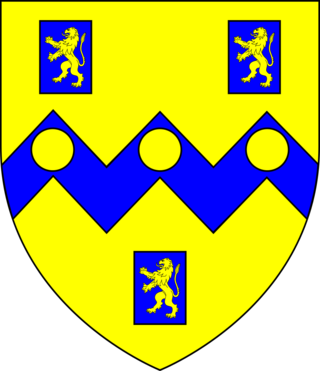Related Research Articles

The Third Protectorate Parliament sat for one session, from 27 January 1659 until 22 April 1659, with Chaloner Chute and Thomas Bampfylde as the Speakers of the House of Commons. It was a bicameral Parliament, with an Upper House having a power of veto over the Commons.
East Looe was a parliamentary borough represented in the House of Commons of England from 1571 to 1707, in the House of Commons of Great Britain from 1707 to 1800, and finally in the House of Commons of the United Kingdom from 1801 until its abolition in 1832. It elected two Members of Parliament (MP) by the bloc vote system of election. It was disenfranchised in the Reform Act 1832.
Carrickfergus and Belfast was a constituency in Ireland, that returned a single Member of Parliament to sit in the House of Commons of the Commonwealth of England, Scotland and Ireland.
Armagh Borough was a constituency represented in the Irish House of Commons, the house of representatives of the Kingdom of Ireland, from 1613 to 1800.

Lancashire was a county constituency of the House of Commons of the Parliament of England from 1290, then of the Parliament of Great Britain from 1707 to 1800, and of the Parliament of the United Kingdom from 1801 to 1832. It was represented by two Members of Parliament, traditionally known as Knights of the Shire until 1832.
St Mawes was a rotten borough in Cornwall, England. It returned two Members of Parliament (MPs) to the House of Commons of England from 1562 to 1707, to the House of Commons of Great Britain from 1707 to 1800, and to the House of Commons of the United Kingdom until it was abolished by the Great Reform Act in 1832.
Belfast was a constituency in the Irish House of Commons, the house of representatives of the Kingdom of Ireland, until 1800.

Thomas Wise of Sydenham in Devon, was an English politician who sat in the House of Commons of England at various times between 1625 and 1641.
William Langton was an English lawyer and politician who sat in the House of Commons between 1645 and 1648.
Sir Thomas Clarges was an English politician who sat in the House of Commons at various times between 1656 and 1695. He played an important part in bringing about the Restoration of the Monarchy in 1660.
John Baldwin was an English politician who sat in the House of Commons in 1659 and 1660.

Robert Rolle was an English politician who sat in the House of Commons at various times between 1654 and 1660.
Sir Gilbert Ireland of Hale Hall, Lancashire was an English politician who sat in the House of Commons at various times between 1654 and 1675.
Henry Porter was an English politician who sat in the House of Commons in 1659.
Robert Markland was an English politician who sat in the House of Commons in 1659.
Nathaniel Waterhouse was an English politician who sat in the House of Commons in 1656 and 1659.
Robert Shapcote, JP was an English lawyer from Devon and four times Member of Parliament for Tiverton in 1646–1649, 1654, 1656 and 1660. He sat in the Irish House of Commons for the borough of Wicklow from 1661 to 1665 and was Solicitor-General for Ireland and twice briefly Attorney-General for Ireland. He fought in the Parliamentary army in the Civil War.
References
- 1 2 William Duncombe Pink, Alfred B. Beaven The parliamentary representation of Lancashire, (county and borough), 1258-1885, with biographical and genealogical notices of the members, &c. (1889)
- ↑ Willis, Browne (1750). Notitia Parliamentaria, Part II: A Series or Lists of the Representatives in the several Parliaments held from the Reformation 1541, to the Restoration 1660 ... London. pp. 229–239.